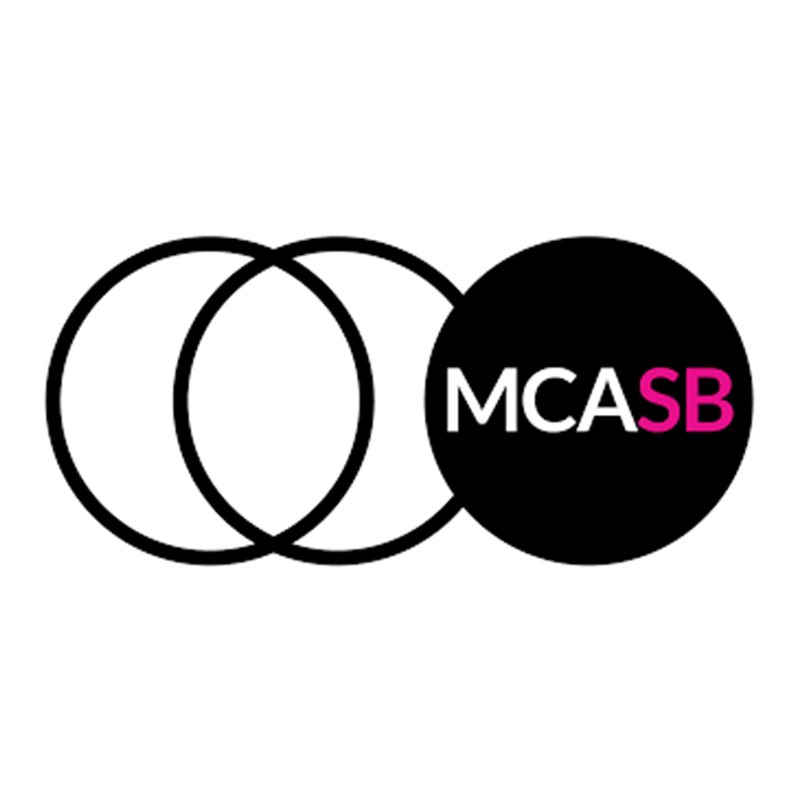 Contemporary Art Santa Barbara Museum
Contemporary Art Santa Barbara Museum
Visual distortion and disorientation evoke sensations of altered perception in the work of Rosha Yaghmai (b. 1978, Santa Monica, CA) in which she mines her personal, familial, and cultural histories to unearth embedded meaning. Yaghmai’s sculptural practice posits the generative ability of ambiguity to stimulate recall, epitomizing the expansive and transformational promise of psychedelia. Experimentation with materiality and representation constructs an uncanny universe informed by Persian miniatures, ancient Iranian myths, trippy blacklight posters, and 1990s surf aesthetic. By manipulating natural and industrial materials in a way that renders them contextually filmy and intangible, Yaghmai assembles sites of memory where historicity becomes porous. Questioning whether memory exists within individual trajectories or collective identities she proposes that perhaps memory is akin to a sense of ‘jamais vu’ (never seen), a phenomenon describing a situation one recognizes in some fashion, but nonetheless seems foreign. In the late 1970s, Yaghmai’s family emigrated from Northern California to her father’s native Iran, where she was conceived, only to find themselves returning to the US where she was born at the start of the Iranian revolution. This schism drastically shifted the trajectory of her life, growing up in Southern California as the socio-political landscape of Iran was forever altered. Like the children of many emigres, Yaghmai absorbed the influence of two distinct cultures: a childhood infused by the beach culture of Los Angeles, and artifacts from the Iran of her father’s past. An expanded presentation of her most recent body of work, Yaghmai’s ‘Afterimages’ aligns these parallel histories in this exhibition at MCASB. Using classic illustrations of the epic poem Shahnameh, The Book of Kings, as her image source, she distorts any recognizable features of the landscape or characters that populate the mythical representations of historical Persia. Enlarging, inverting, and abstracting the imagery leaves behind an afterimage, or a persistent impression of a history that doesn't quite belong to the artist. Shimmering like spectral apparitions, luminous orbs of color radiate, suggesting an aura photograph missing its figure. Nodding to the Light and Space movement, the materials of Yaghmai’s work play with varying levels of opacity and transparency. Afterimages are produced by layering painted organza, creating moiré patterns. Hallucinogenic in appearance, the source material becomes illegible, mirroring the artist's own challenge of embodying a culture that she has never fully known. Large granite rocks, unearthed from the California landscape, counterbalance the diaphanous and dream-like quality of the organza; their terrestrial hulk attempting to ground us in reality. Further departing from a clear understanding of cultural structures, Yaghmai presents an entanglement of pipes, representing an unearthed system of connection and communication, albeit one that is fragmented and reconfigured. As she excavates for meaning, striving to weld the networks of her cultural references, these mangled and rusty pipes embody the residues of absent architecture. The pacing of Yaghmai’s process-oriented studio practice is informed by a background in photography. In an attempt to bring to light inherited histories she paves a new course, emboldened by the freedom of viewing the gauzy past through a fractured lens. Acknowledging the Sisyphean nature of accurately defining that which is no longer present allows for the creation of contemporary networks. Enlisting the agency of forgetting reveals new compositions, only for them to haunt our psyche long after we have left the white cube.
Exhibition credits: "Exhibition curated by Alexandra Terry. Exhibition text by Alexandra Terry."
Image credits: "Images courtesy the Artist and Museum of Contemporary Art Santa Barbara."
